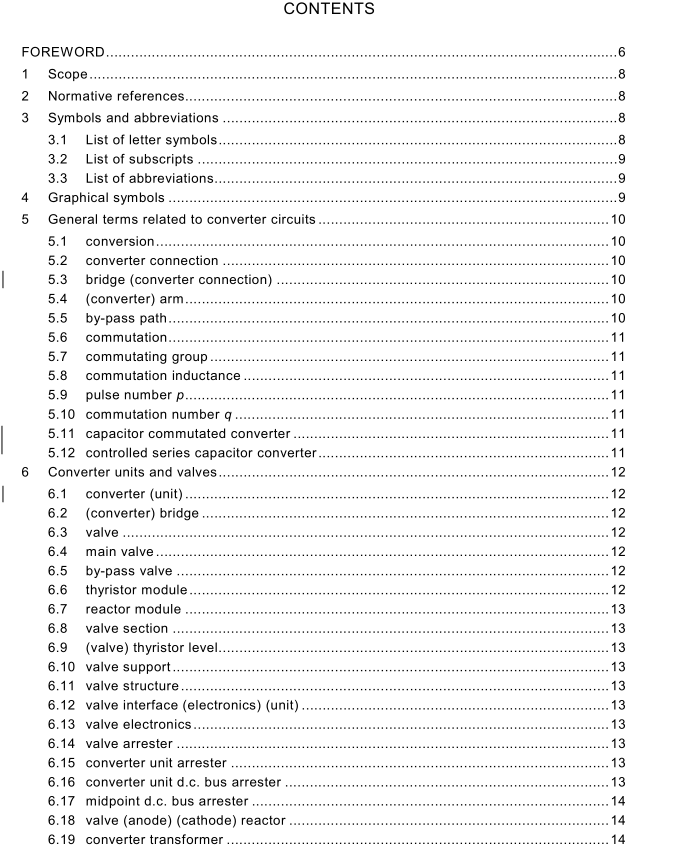IEC 60633 pdf – Terminology for high-voltage direct current (HVDC) transmission

IEC 60633 pdf – Terminology for high-voltage direct current (HVDC) transmission
5General terms related to converter circuits
For the purposes of this standard, the following terms and definitions apply.
NOTE For a more complete list of the terms which have been adopted for static converters,see lEC 60050(551)and lEC 60146-1-1,
5.1
conversion
in the context of HVDC,the transfer of energy from a.c. to d.c. or vice versa, or a combinationof these operations
5.2
converter connection
electrical arrangement of arms and other components necessary for the functioning of the mainpower circuit of a converter
5.3
bridge (converter connection)
double-way connection as illustrated on Figure 2, comprising six converter arms such that thecentre terminals are the phase terminals of the a.c. circuit, and that the outer terminals of likepolarity are connected together and are the d.c. terminals
NOTE The term “bridge” may be used to describe either the circult connection or the equipment implementing thatcircuit (see 6.2)
5.3.1
uniform bridge
bridge where all converter arms are either controllable or non-controllable
5.3.2
non-uniform bridge
bridge with both controllable and non-controllable converter arms
5.4
(converter) arm
part of an operative circuit used for conversion which is connected between an a.c. terminaland a d.c. terminal, with the ability to conduct current in only one direction, defined as theforward direction (see 7.3)
NOTE The main function of a converter arm is conversion;it may also perform additional functions such asvoltage limiting. damping. etc.
5.4.1
controllable converter arm
converter arm in which the start of forward conduction may be determined by an externallyapplied signal
5.4.2
non-controllable converter arm
converter arm in which the start of forward conduction is determined solely by the voltageapplied to its terminals
5.5
by-pass path
low resistance path between the d.c. terminals of one or several bridges excluding the a.c.circuit
NOTE The by-pass path may either constitute a unidirectional path,e.g. a by-pass arm (see 5.5.1),or a by-passpair (see 5.5.2), or it may constitute a bidirectional path, e.g.a by-pass switch (see 6.20).









